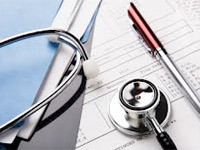Our Community Matters
In collaboration with Fountain of Life Kingdom Ministries, and in partnership with The Marketplace, Family Medicine Center is hosting a Community Outreach & Free Health Screening event:

In collaboration with Fountain of Life Kingdom Ministries, and in partnership with The Marketplace, Family Medicine Center is hosting a Community Outreach & Free Health Screening event:
Family Medicine Center’s top tips for getting the most out of your annual physical.
1. Arrive on time
2. Bring a list of your medications with you, include the dose and how often you take it
3. Know your family medical history.
4. Bring your vaccination card with you
5. Discuss with Dr Cates or Nurse Cates if you are having feelings of stress, anxiety, depression or suicidal thoughts.
6. Be honest about your drinking, eating and smoking habits.
At your annual physical ask these questions.
1. What can I do to improve my health?
2. Am I a healthy weight?
3. What is my blood pressure?
4. Am I at risk for diabetes?
5. Are there any other tests I should take for my age?
6. Do I need any vaccinations?
7. Am I drinking too much alcohol?
To make an appointment for your annual physical call 327 2878
Why is an Annual Physical important and what can you expect…
 The physical exam is an essential part of any doctor’s visit.
The physical exam is an essential part of any doctor’s visit.
For some people, having an annual physical examination is a source of reassurance that they’re as healthy as they feel. Others see it as an alarm system, to catch health problems before they become serious.
The value of the routine annual exam has been debated recently, but it remains a cherished tradition among many doctors and patients. What can you expect from your annual physical exam?
Read more: Annual Physical Exam: What can you expect?
What kind of things will the doctor look for during the physical exam?
History: This is your chance to mention any complaints or concerns about your health. Your doctor will also likely quiz you about important behaviors, like smoking, excessive alcohol use, diet, and exercise, The doctor will also check on your vaccination status and update your personal and family medical history.
Vital Signs. These are some vital signs checked by your doctor:
Blood pressure: less than 120 over 80 is a normal blood pressure. Doctors define high blood pressure (hypertension) as 140 over 90 or higher.
Heart rate: Values between 60 and 100 are considered normal. Many healthy people have heart rates slower than 60.
Respiration rate: Around 16 is normal. Breathing more than 20 times per minute can suggest heart or lung problems.
Temperature: 37ºCor 98.6ºF is the average, but healthy people can have resting temperatures slightly higher or lower.
General Appearance: Your doctor gathers a large amount of information about you and your health just by watching and talking to you. How is your memory and mental quickness? Does your skin appear healthy? Can you easily stand and walk?
Heart Exam: Listening to your heart with a stethoscope, a doctor might detect an irregular heartbeat, a heart murmur, or other clues to heart disease. We do this using an ecg machine which we have at the Medical Centre.
Lung Exam: Using a stethoscope, a doctor listens for crackles, wheezes, or decreased breath sounds. These and other sounds are clues to the presence of heart or lung disease.
Head and Neck Exam: Opening up and saying “ah” shows off your throat and tonsils. The quality of your teeth and gums also provides information about your overall health. Ears, nose, sinuses, eyes, lymph nodes, thyroid, and carotid arteries may also be examined.
Abdominal Exam: Your doctor can use a range of examination techniques including tapping your abdomen to detect liver size and presence of abdominal fluid, listening for bowel sounds with a stethoscope, and palpating for tenderness.
Neurological Exam: Nerves, muscle strength, reflexes, balance, and mental state may be assessed.
Dermatological Exam: Skin and nail findings could indicate a dermatological problem or disease somewhere else in the body.
Extremities Exam: Your doctor will look for physical and sensory changes. Pulses can be checked in your arms and legs. Examining joints can assess for abnormalities.